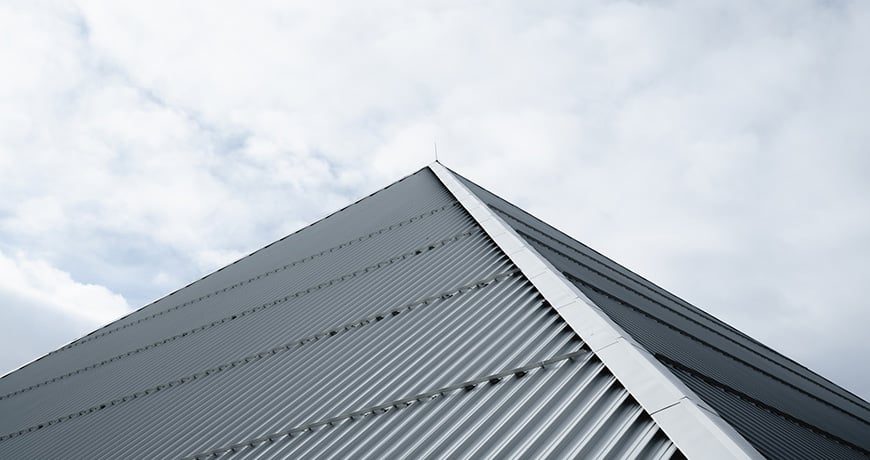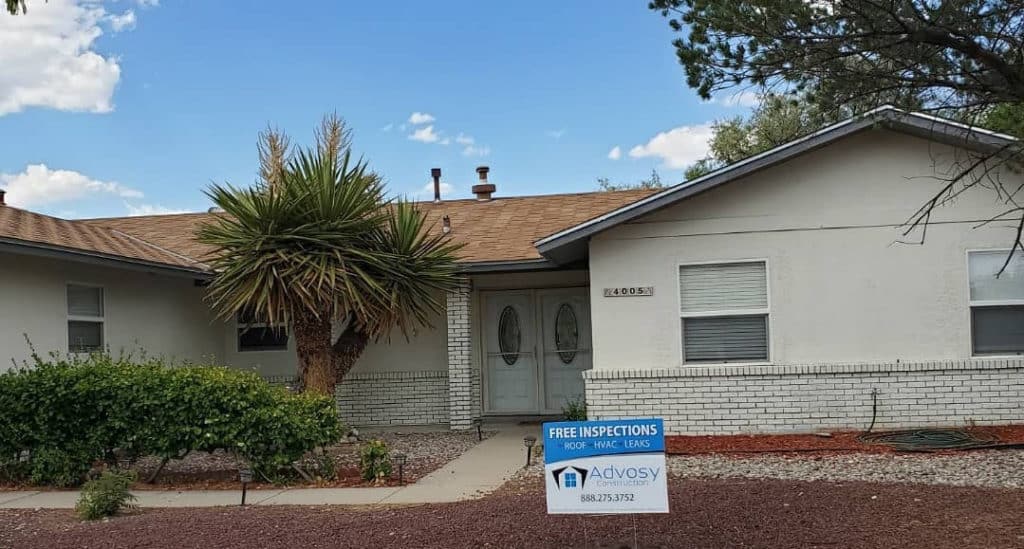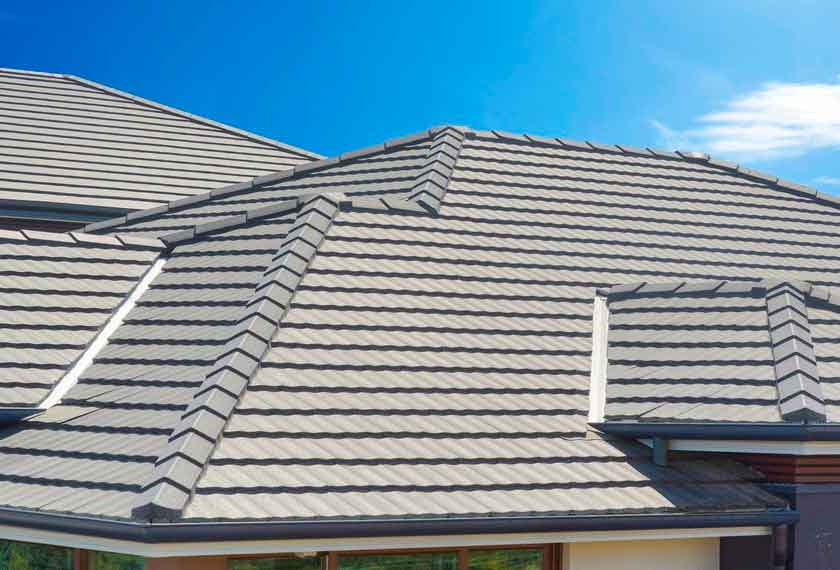In areas of the world with hot climates, such as Arizona in the United States, it is important to consider how a roof will affect the interior temperature of a home. A flat or pitched roof can be chosen for installation on a property, but both types have their own benefits and drawbacks when it comes to cooling an area. This article examines which type of roof is easier to cool in Arizona.
The first factor that must be considered is roof insulation. The amount of insulation provided by either a flat or pitched roof can significantly influence the overall cooling capacity of a building. While there are many different materials available for use on roofs, some may provide better insulation than others depending on local conditions. Additionally, the pitch of any given pitched roof also affects its ability to insulate against heat transfer from outside air into the house’s interior.
Definition Of Flat And Pitched Roofs
A roof is an important architectural element of a building, as it provides protection from the elements. Roofs can be divided into two main categories: flat roofs and pitched roofs. Flat roofs feature a slight slope (usually between 1/8 inch to 4 inches) that allows water runoff. Pitched roofs have a steep angle that helps shed rainwater and snow more quickly than flat roofs. Both types of roofs come with their own set of advantages and disadvantages.
Flat roofs are relatively easy to construct, require less material than pitched roofs, provide living space on top of the roof or in attics, and often offer better insulation options due to the lack of pitch. However, they may need additional waterproofing measures since they do not naturally shed water like pitched roofs do. Additionally, if proper maintenance is not done regularly, ponding water can form which increases the chance for damage or leaks.
Pitched roofs typically require more materials for construction and take longer to build but offer greater weatherproofing benefits since they direct rainfall away from the building’s structure easily. They also tend to last longer than flat roofs since there is no pooling water on them; however, installation costs tend to be higher than those associated with flat-roofed buildings due to extra labor required for angled cuts and framing work needed for support beams and trusses.
Pros And Cons Of Flat Roofs In Arizona
In Arizona, a flat roof may be easier to cool than a pitched roof. As the air temperature increases, more heat is absorbed by the flat surface of the roof and dispersed into the atmosphere through convection. This helps reduce indoor temperatures during hot summer months. On the other hand, a steeply sloped roof can cause warm air from the sun to become trapped near its peak, resulting in higher inside temperatures for longer periods of time. Additionally, flat roofs allow for increased airflow by allowing cooler air to enter at low levels while hotter air exits above it.
Pitched roofs have their advantages as well. They provide better protection against rainwater runoff and prevent debris or leaves from accumulating on top of the structure that could eventually lead to costly damage repairs. Pitched roofs also typically require less maintenance due to their steeper angle which allows snow and ice to slide off easily during winter months. In addition, they offer more interior space since some areas are usually left unused on a flat roof because they cannot support additional weight such as furniture or appliances without reinforcements like beams or rafters. Ultimately, deciding which type of roof is best suited depends largely on personal preference and budget constraints.
Pros And Cons Of Pitched Roofs In Arizona
Pitched roofs in Arizona are popular for their ability to protect homes from the sun’s heat and offer greater insulation. The steep angle of a pitched roof allows air to move freely, allowing cool air to enter from below as hot air escapes through vents at its peak. Additionally, most materials used on pitched roofs can reflect some of the sun’s energy away from the home. As such, they can be an effective cooling system that helps reduce energy bills during summer months.
On the other hand, pitched roofs require more maintenance due to their complex design and multiple components. They have many parts which need regular inspection and repair or replacement over time including shingles, flashing, gutters, valleys and ridge caps. This can lead to higher costs associated with installation and repairs when compared to flat roofs. Additionally, because these types of roofs often allow rainwater runoff faster than flat ones do, there is an increased risk of flooding if water pools in areas where it shouldn’t.
Design Considerations For An Arizona Home With A Flat Or Pitched Roof
When considering whether to install a flat roof or pitched roof in Arizona, there are several design considerations. In terms of cooling efficiency and energy costs, the pitch of the roof makes a difference. A steeply-pitched roof increases air circulation and can help reduce summer heat gain on the home’s interior. The steeper angle also allows for greater insulation that prevents warm air from entering the attic and upper levels of the house. Additionally, it is easier to install certain types of solar panels – such as photovoltaic systems – on a sloped surface than on a flat one.
On the other hand, installing a flat roof offers more space for outdoor living areas with fewer obstructions from rafters and trusses. Flat roofs tend to be less expensive to build due to their simpler construction requirements, require little maintenance over time, and provide an aesthetically pleasing appearance when combined with contemporary architecture designs. Furthermore, they offer protection against rainwater runoff by directing water into drains rather than along slopes which could cause damage to walls or foundations. Ultimately, choosing between a flat or pitched roof requires careful consideration of both practicality and aesthetics based on individual needs and preferences.
Insulation For A Flat Or Pitched Roof In Arizona
In Arizona, insulation is an important element to consider when selecting a roof type. A flat roof typically requires two layers of insulation along with asphalt or tar paper as protection between the layers. This helps ensure that no heat from outside sources can pass through the top layer and into the home below. On the other hand, pitched roofs are more easily insulated than flat roofs because they naturally have better air flow due to their angled design. It is also easier to add additional insulation on pitched roofs if needed.
The most common materials used for insulation on both types of roofs are closed-cell foam or spray-on polyurethane foam. These materials provide excellent temperature control, energy efficiency, and moisture resistance without adding too much weight to the structure. Additionally, it is important to factor in local climate conditions during installation since some areas require extra insulation depending on seasonal temperatures. Ultimately, any decision regarding insulation should be based upon individual needs and preferences as well as building codes in order to achieve optimal thermal comfort within your home.
Ventilation For A Flat Or Pitched Roof In Arizona
In Arizona, the most important factor in cooling a roof is ventilation. When air circulates around and underneath a roof surface, heat dissipation is increased significantly. A flat roof will require more active ventilation than a pitched one due to their construction. An effective method of ventilating a flat roof is using ridge vents that are installed along the peak or ridgeline where warm air can escape from inside the building. Additionally, soffit vents should be included at lower points to create an intake for cooler outside air to enter the space. This type of ventilation system helps reduce internal temperatures by allowing hot air to exit through the ridge vents while bringing in cool outside air from below.
Pitched roofs also need proper ventilation because moisture buildup under shingles can cause rot and other problems over time if left unchecked. The best way to ensure adequate airflow on a pitched roof is with continuous ridge and soffit vents as well as turbine-style attic exhaust fans which help draw out stale indoor air regularly. Installing these components properly ensures that both heated and cooled spaces receive optimal circulation throughout the home or office environment all year round.
Impact Of Sunlight On Cooling Efficiency Of A Flat Or Pitched Roof
The impact of sunlight on the cooling efficiency of a flat or pitched roof in Arizona can be significant. Sunlight exposure increases the temperature of a surface and subsequently leads to higher air temperatures within an attic space. The angle at which direct sunlight hits the roof is also important for determining how much heat will be transferred through radiation. In general, pitched roofs are better suited for deflecting sunlight than flat roofs due to their steep angles, leading to lower overall temperatures in attics and other areas beneath them.
Similarly, indirect sunlight from nearby reflecting surfaces such as walls and windows can still increase the temperature of both flat and pitched roofs. To reduce this effect, good insulation should be used along with shading devices such as trees, awnings or overhangs that block out reflected light. Both elements together can help mitigate additional heating caused by direct or indirect sunlight exposure on either type of roof in Arizona’s harsh climate conditions.




